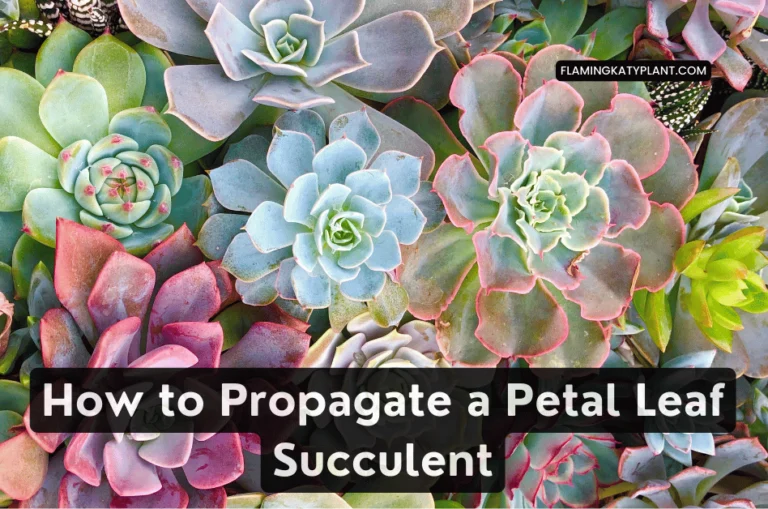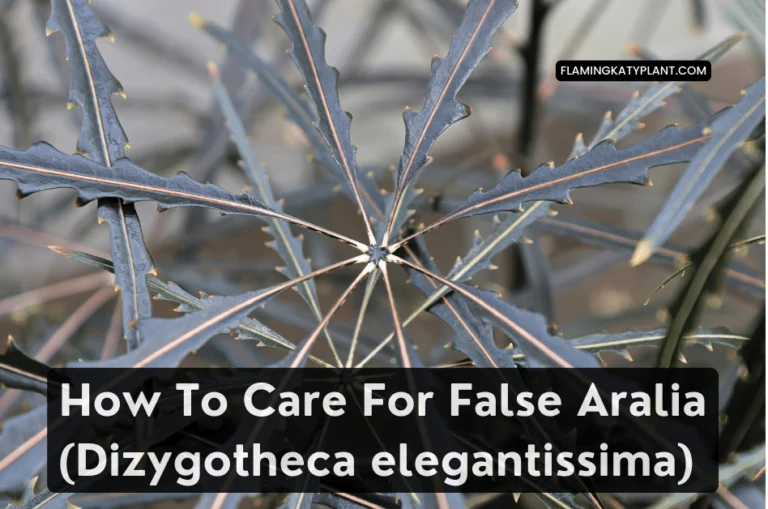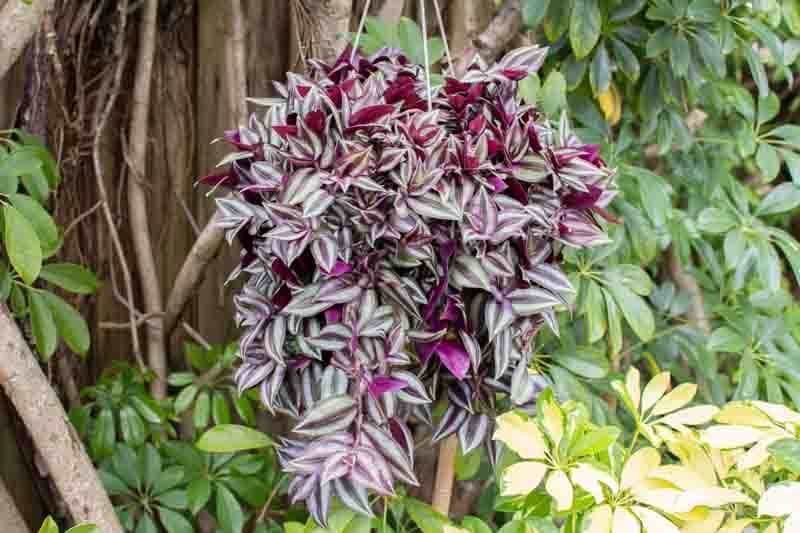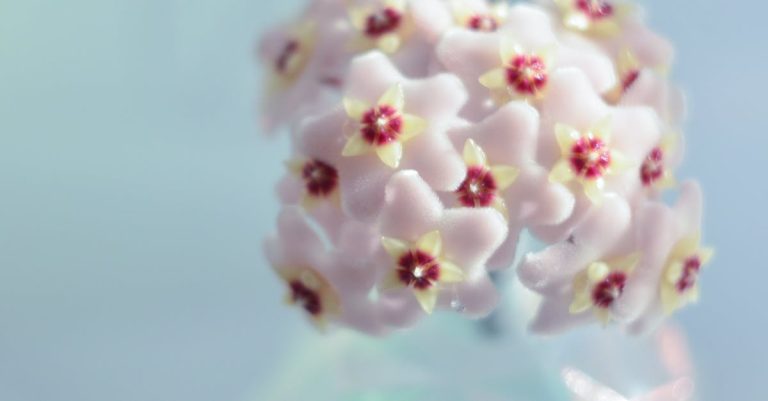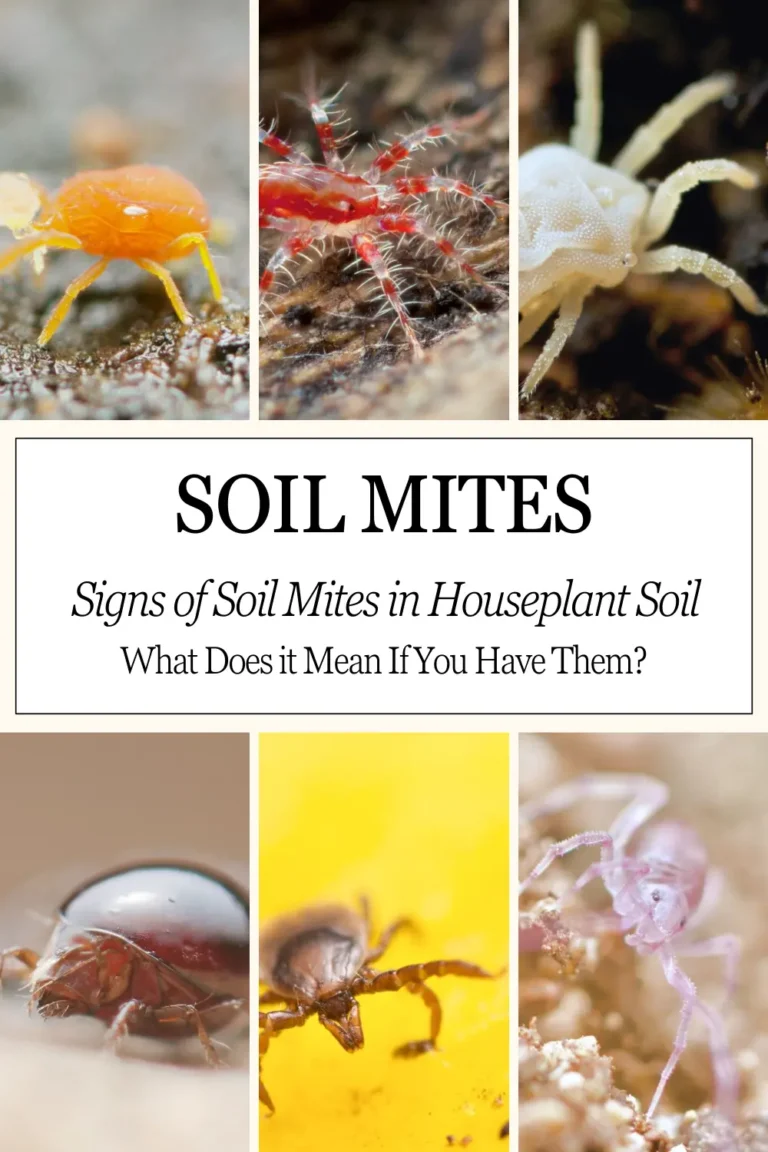How To Care For Peperomia Obtusifolia Variegata (Peperomia obtusifolia variegata)
How to Care for Peperomia obtusifolia Variegata: A Detailed Guide
Peperomia obtusifolia Variegata, also known as Variegated Baby Rubber Plant, is a popular houseplant known for its thick, glossy, oval-shaped leaves with beautiful variegation patterns. This plant is relatively easy to care for and can add a touch of elegance to any indoor space. Here’s a comprehensive guide to help you care for your Peperomia obtusifolia Variegata and keep it thriving.
1. Light Requirements
Peperomia obtusifolia Variegata thrives in bright, indirect light. While it can tolerate lower light conditions, the variegation on its leaves will be more pronounced in brighter light. Avoid direct sunlight, which can scorch the leaves. Place your plant near an east or north-facing window where it can receive filtered light. If your home has low light, consider using fluorescent or LED grow lights to supplement natural light.

2. Watering
Water your Peperomia obtusifolia Variegata when the top inch of soil feels dry to the touch. Overwatering can lead to root rot, so ensure the pot has drainage holes to allow excess water to escape. During the growing season (spring and summer), you may need to water more frequently. Reduce watering in the fall and winter when the plant’s growth slows. Avoid letting the plant sit in water, as this can lead to root rot.
3. Humidity
Peperomia obtusifolia Variegata prefers moderate humidity levels, ideally between 40-50%. It can tolerate the average indoor humidity but will benefit from higher humidity. If your home is dry, especially during winter, increase humidity by using a humidifier, placing the plant in a bathroom or kitchen where humidity is naturally higher, or regularly misting the leaves. Grouping plants together can also help raise the humidity level.
4. Temperature
This plant thrives in temperatures between 65-75°F (18-24°C). It is sensitive to cold drafts and sudden temperature changes. Keep the plant away from windows or doors that may have cool drafts and from heating or air conditioning vents. Peperomia obtusifolia Variegata can tolerate temperatures as low as 50°F (10°C) but should be protected from frost.
5. Soil and Potting
Peperomia obtusifolia Variegata requires well-draining soil. A good mix is one part peat moss or coco coir, one part perlite, and one part potting soil. This ensures good drainage while retaining some moisture. Repotting should be done every 2-3 years or when the plant becomes root-bound, ideally in the spring. Choose a pot that is only slightly larger than the current one to avoid excess moisture retention.
6. Fertilizing
Feed your Peperomia obtusifolia Variegata every 4-6 weeks during the growing season with a balanced, water-soluble fertilizer diluted to half strength. Avoid fertilizing in the fall and winter months when the plant’s growth slows. Over-fertilizing can lead to a buildup of salts in the soil, which can harm the plant. Slow-release fertilizers can also be applied sparingly in the spring.
7. Pruning
Regular pruning helps maintain the plant’s shape and encourages bushier growth. Use clean, sharp scissors or pruning shears to trim back any leggy or overgrown stems. Pruning also helps improve air circulation around the plant. Remove any yellow or damaged leaves to keep the plant healthy. When pruning, always cut just above a leaf node to encourage new growth.
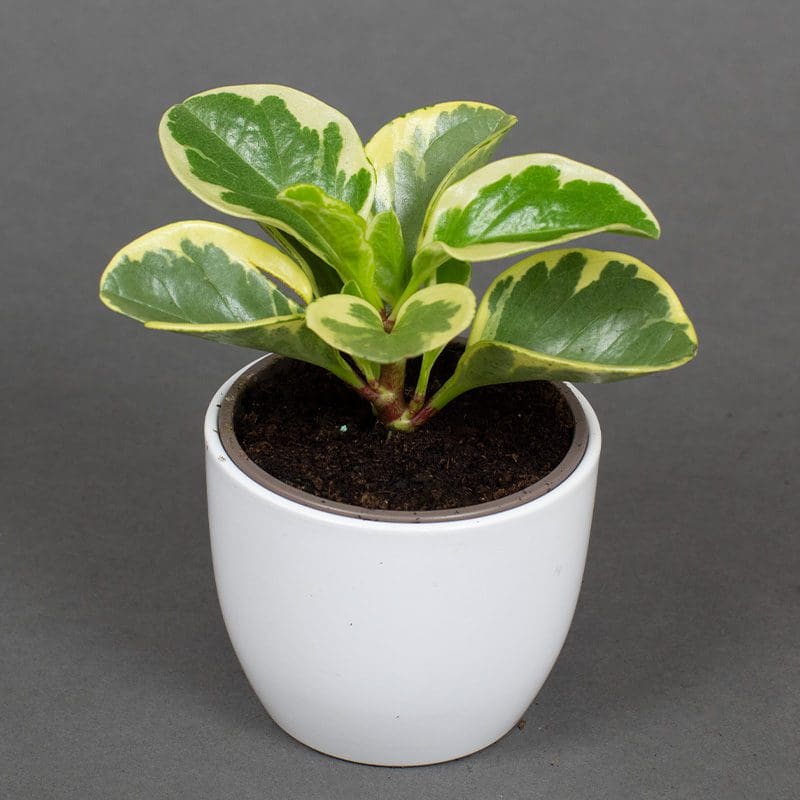
8. Propagation
Peperomia obtusifolia Variegata is easy to propagate through stem cuttings or leaf cuttings:
- Stem Cuttings: Take a cutting with at least one node and a few leaves, and place it in water or a moist soil mix. If rooting in water, change the water every few days to prevent stagnation. Once roots develop, transfer the cutting to a pot with well-draining soil. Keep the new plant in a warm, humid environment until it establishes new growth.
- Leaf Cuttings: Cut a healthy leaf with a bit of stem attached and insert the stem into a moist soil mix. Keep the cutting in a warm, humid environment until roots develop and new growth appears.
9. Pest and Disease Management
Peperomia obtusifolia Variegata can be susceptible to pests like spider mites, aphids, and mealybugs. Regularly inspect the plant for signs of pests, such as sticky residue, webbing, or visible insects. Treat infestations with insecticidal soap, neem oil, or by wiping the leaves with a damp cloth. Proper watering and good air circulation help prevent fungal and bacterial diseases. If you notice any signs of disease, such as black spots or yellowing leaves, remove the affected areas and adjust watering practices.
10. Special Care Tips
- Leaf Care: The thick, glossy leaves of Peperomia obtusifolia Variegata can collect dust, which can interfere with photosynthesis. Clean the leaves gently with a damp cloth or sponge to keep them looking their best. Avoid using leaf shine products, as they can clog the pores on the leaves.
- Growth Habit: This plant has a compact, bushy growth habit and can be grown in hanging baskets or small pots. It makes an excellent tabletop or shelf plant due to its manageable size.
Conclusion
Peperomia obtusifolia Variegata, with its attractive variegated foliage and easy-care nature, can be a delightful addition to your indoor garden. By providing the right light, moisture, and environment, you can enjoy the beauty and growth of this plant for years. Regular maintenance, including proper watering, fertilizing, and pruning, will ensure your Peperomia obtusifolia Variegata remains healthy and vibrant. Whether you are a seasoned gardener or a beginner, this plant offers a rewarding and visually captivating plant care experience.
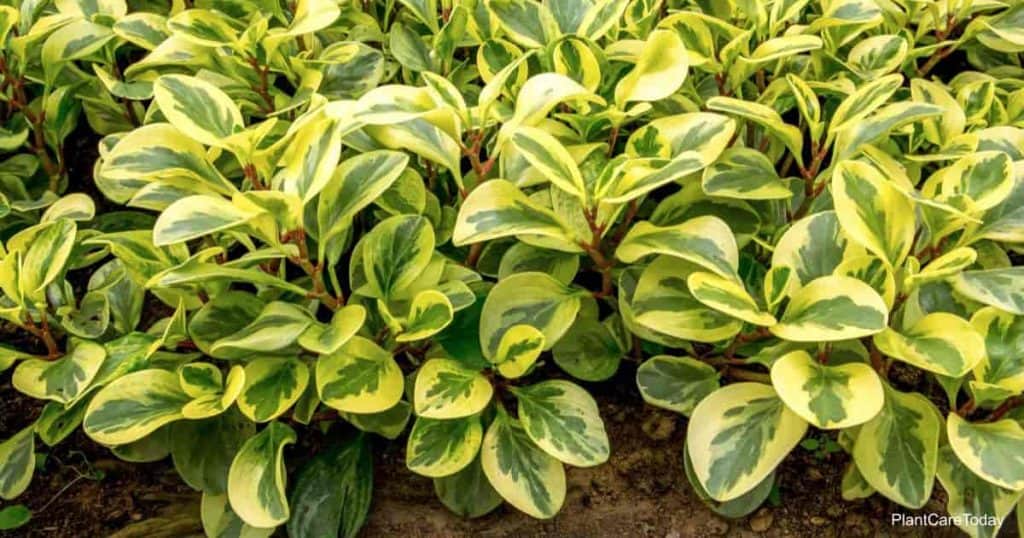
Peperomia obtusifolia variegata, commonly known as Variegated Baby Rubber Plant, is a popular houseplant known for its striking green and white leaves. This plant belongs to the Pepper family and is native to Central and South America. Its unique variegated foliage makes it a favorite choice for indoor decoration, adding a touch of color and vibrancy to any space.
With their compact size and easy maintenance, Peperomia obtusifolia variegata plants have become increasingly popular among plant enthusiasts. They are known for their ability to thrive in low light conditions, making them an ideal choice for those looking to add some greenery to dimly lit areas of their home or office.
One key aspect of caring for Peperomia obtusifolia variegata is ensuring that it receives the right amount of water. Overwatering can lead to root rot, while underwatering can cause the leaves to wilt. It is important to strike a balance by allowing the soil to dry out slightly between waterings. Additionally, these plants prefer high humidity levels, so misting them regularly or placing them near a humidifier can help promote healthy growth.
Another important factor in caring for Peperomia obtusifolia variegata is providing them with well-draining soil and occasional fertilization. A general-purpose houseplant fertilizer can be applied every few weeks during the growing season to ensure that they receive the necessary nutrients for lush foliage.
In addition to their aesthetic appeal, Peperomia obtusifolia variegata plants have been found to have air-purifying properties, making them a valuable addition to any indoor space. With their easy care requirements and decorative foliage, these plants have become a popular choice for both experienced and novice plant enthusiasts looking to add a touch of nature to their surroundings.

